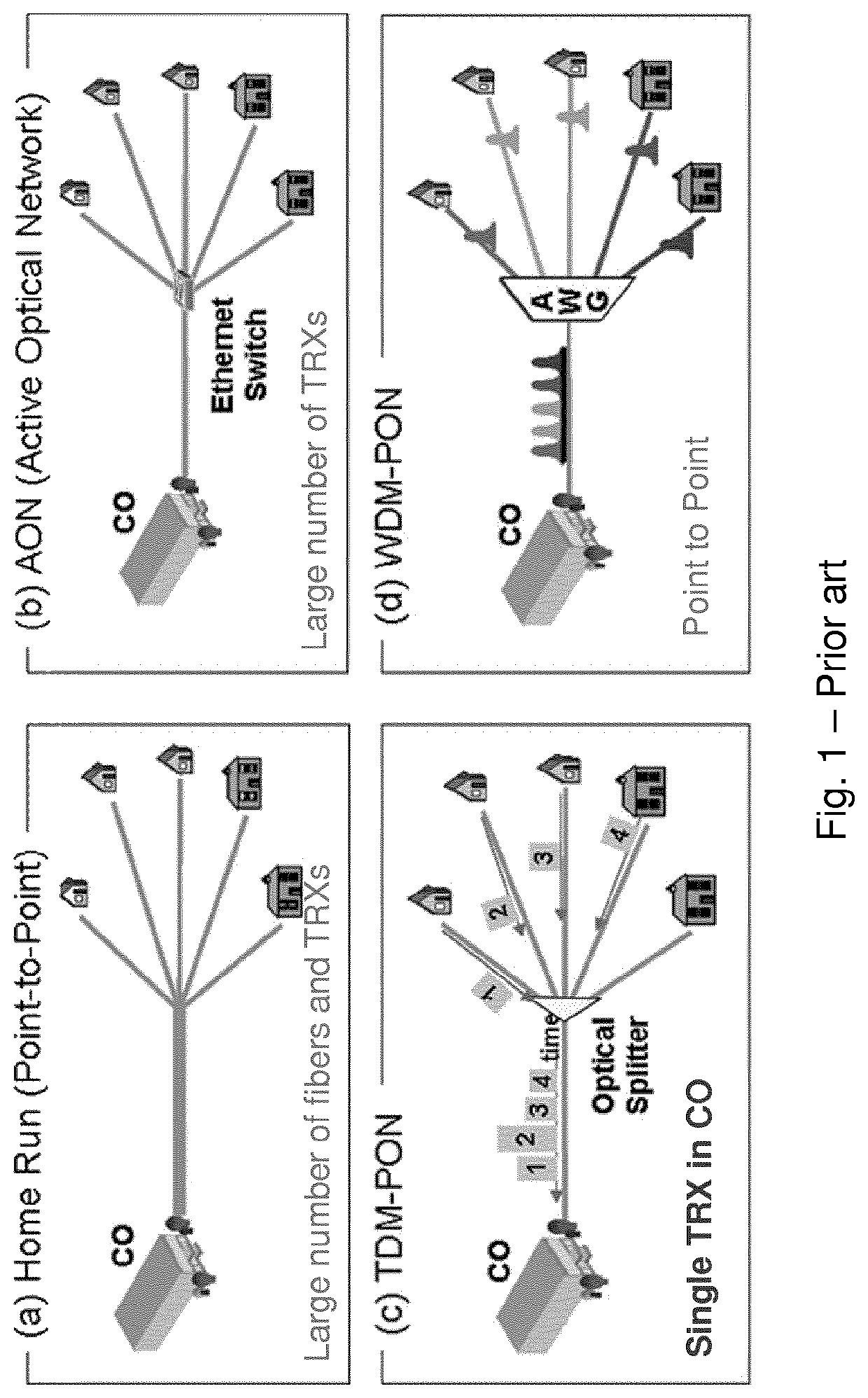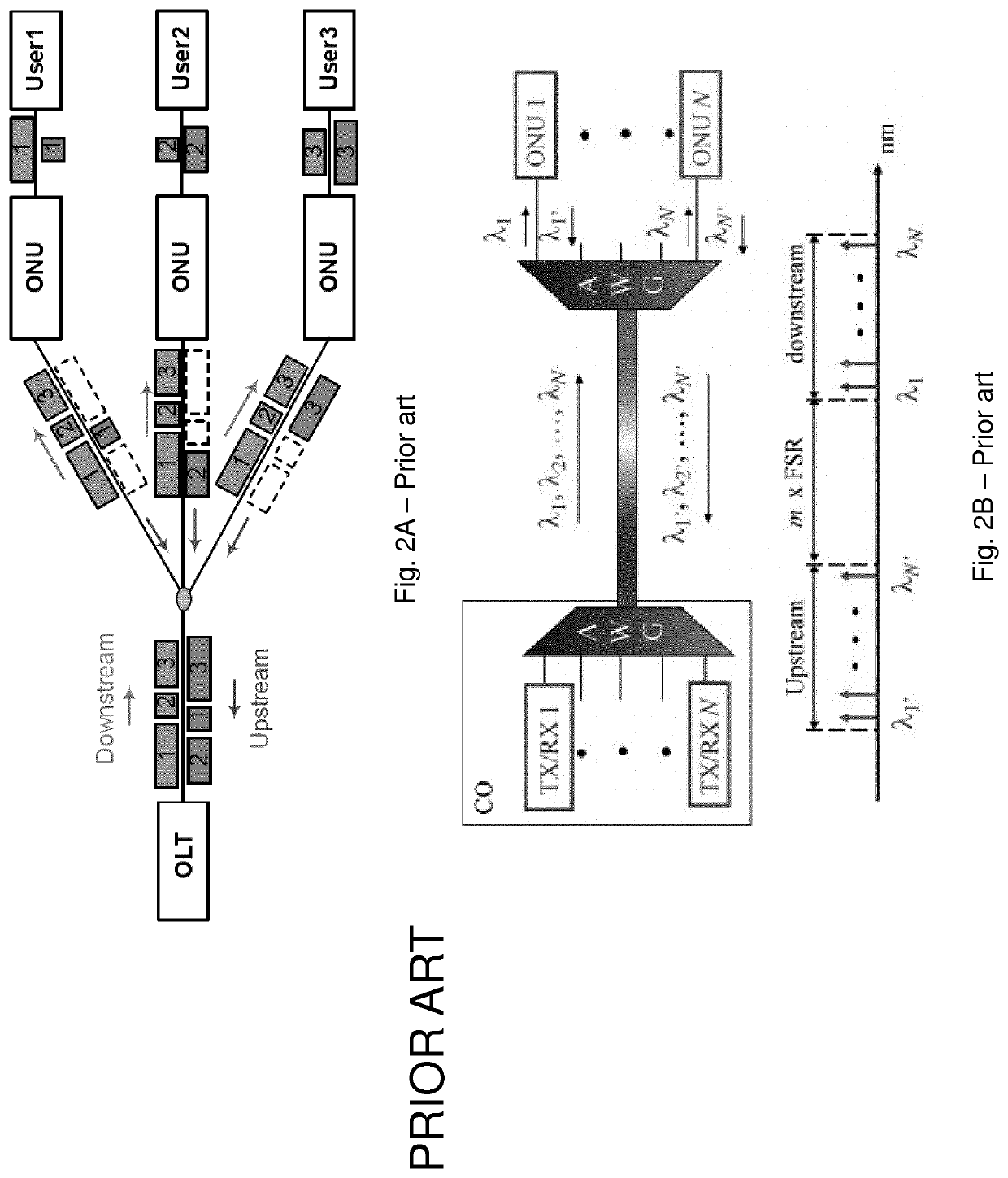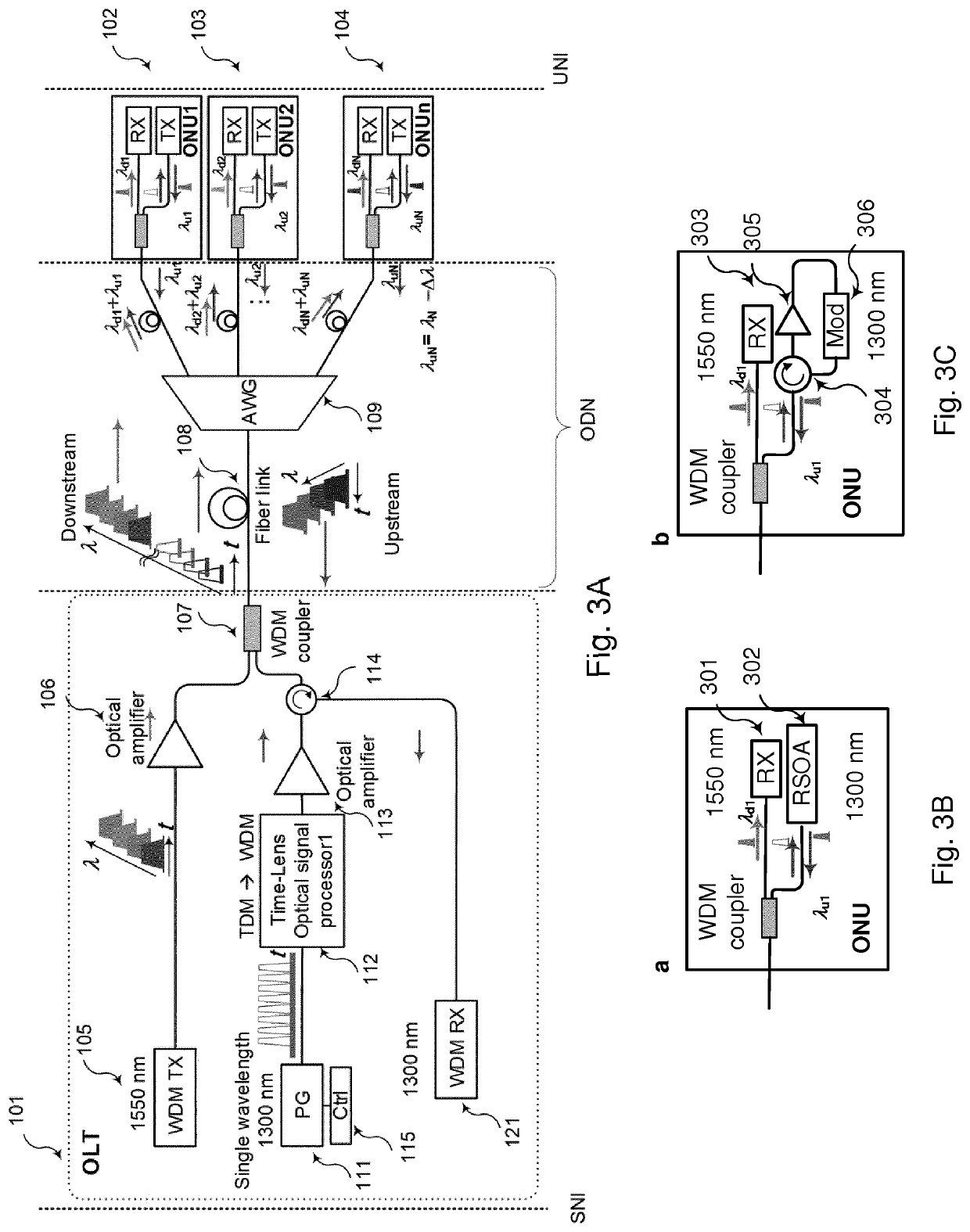Optical line terminal and optical fiber access system with increased flexibility
a technology of optical fiber access system and optical line terminal, which is applied in the field of optical line terminal and optical fiber access system with increased flexibility, can solve the problems of reducing the serial bitrate beyond 10 gb/s of pon system, unable to provide any switching or buffering capabilities, and unable to meet the requirements of pon technology
- Summary
- Abstract
- Description
- Claims
- Application Information
AI Technical Summary
Benefits of technology
Problems solved by technology
Method used
Image
Examples
example
[0100]In this example a flexible hybrid photonic-millimeter-wave transmitter is realized based on a time-lens optical signal processor. 12×2.5-Gb / s OOK and 10×4-Gb / s QPSK hybrid transmission over 100-km SSMF and 0.5-m wireless distance have been demonstrated. A record for the highest number of WDM-ROF channels generated from a single laser and modulator has been achieved, showing great potential for future wireline / wireless integrated access networks.
[0101]The principle of the proposed flexible hybrid photonic-millimeter-wave transmitter is shown in FIG. 4. In the central office, a single-carrier TDM transmitter generates a high-speed TDM signal, in which each TDM data tributary will be later converted to a separate wavelength. For ROF channels the adjacent tributary is left unmodulated.
[0102]OFT is performed to transform this TDM signal to a number of WDM channels at the rate of the relevant TDM tributary; the tributaries act as up-conversion tones. After fiber transmission, an arr...
PUM
 Login to View More
Login to View More Abstract
Description
Claims
Application Information
 Login to View More
Login to View More - R&D
- Intellectual Property
- Life Sciences
- Materials
- Tech Scout
- Unparalleled Data Quality
- Higher Quality Content
- 60% Fewer Hallucinations
Browse by: Latest US Patents, China's latest patents, Technical Efficacy Thesaurus, Application Domain, Technology Topic, Popular Technical Reports.
© 2025 PatSnap. All rights reserved.Legal|Privacy policy|Modern Slavery Act Transparency Statement|Sitemap|About US| Contact US: help@patsnap.com



